Teano. Church of Sant’Agostino
2021
You may also like

2022
Caserta, the Royal Palace
The Royal Palace of Caserta is a royal residence, historically belonging to the Bourbons of the Two Sicilies, located in Caserta. Commissioned by Charles of Bourbon, the laying of the first stone, which started the construction work, took place on January 20, 1752, based on a project by Luigi Vanvitelli: this was followed by his son Carlo and other architects. The palace was completed in 1845.
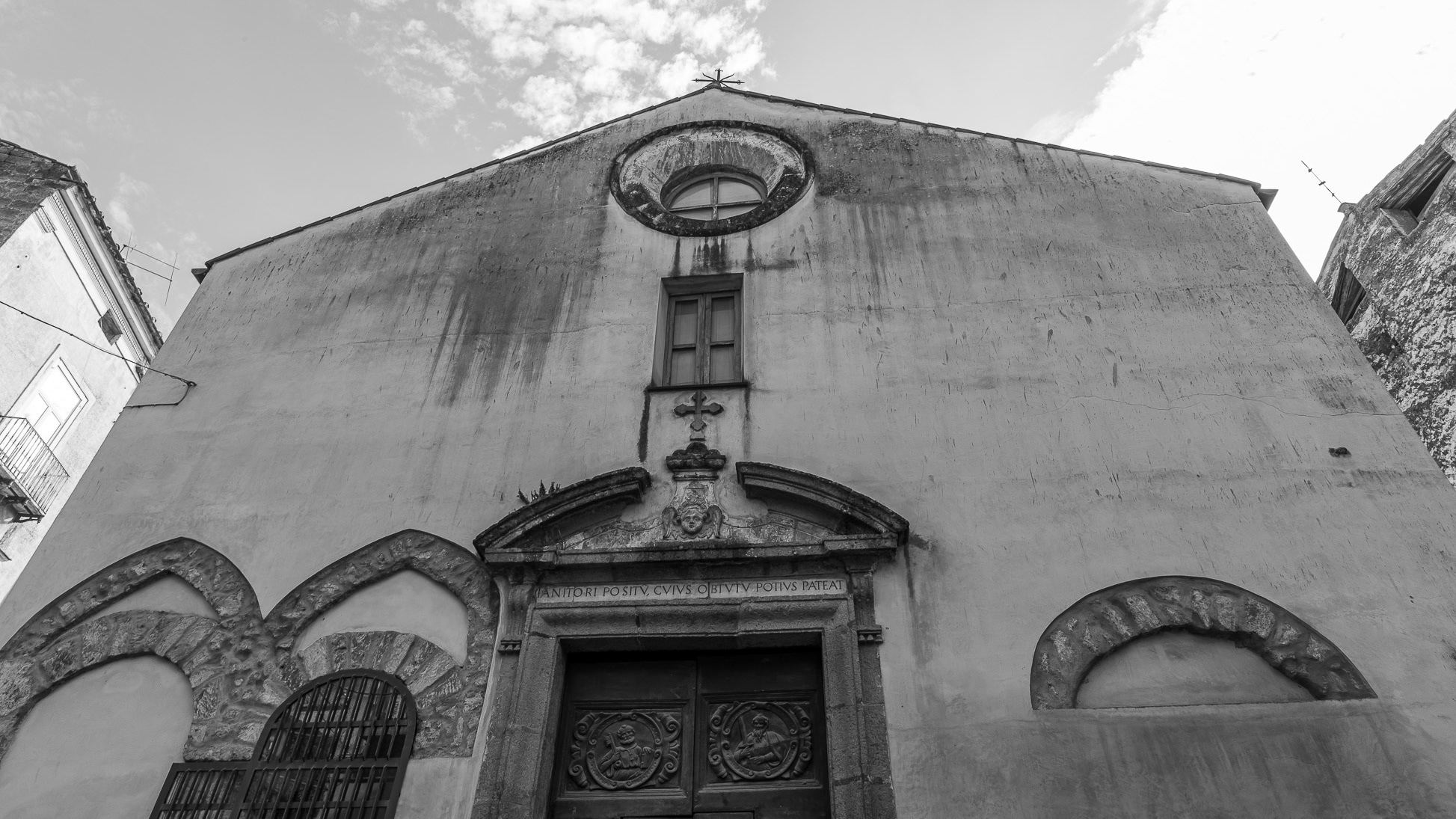
2022
Teano, Campania. The church of San Pietro in Aquariis
It would be built on the ruins of ancient Roman baths. Currently it is no longer used for worship and could be more valued for civic uses as an attractant for the entire country.
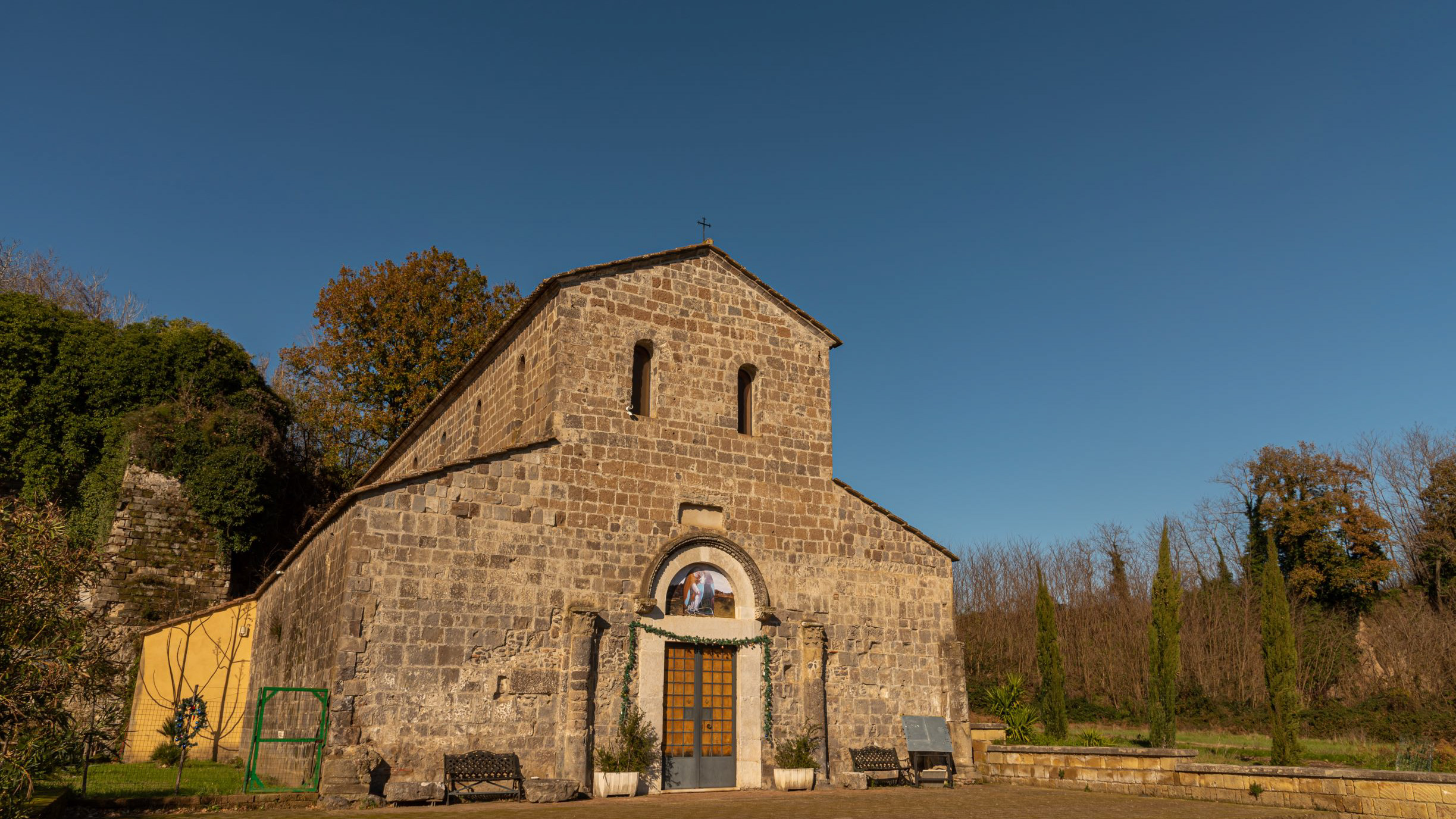
2020
Teano. Church of San Paride ad Fontem
The building of S. Paride is a church with a basilica structure with three naves, and termination with a semicircular apse. The facade, where it is possible to admire the building technique in tuff blocks arranged in regular rows, is characterized by the presence of two semi-columns in tuff on the sides of the portal, and a third in the right corner. The half-columns each rest on a pilaster, also in tuff. A fourth semi-column must have been present near the left corner, where there is still a Tuscan base still in tuff. These still retain the Corinthian capitals of reuse, also in local tuff. The entrance is rather simple, with a molded secmicircular frame supported by two shelves with inlaid motifs in plants. The marble frame still preserves the kyma lesbio decoration, followed by a curb with parallel lines and a second frame with denticles. The frame overlooks a lunette where traces of a fresco can no longer be read. The whole is surmounted by two mullioned windows. Internally, the naves are divided into six bays and separated by arches supported on each side by five quadrangular pillars. The light comes from the mullioned windows placed on the perimeter walls. A large opening, now flanked, also with a round arch, is visible along the left perimeter. The only piece of furniture is the so-called chair of S. Paride, made up of a reddish tuff block. The interior is rather simple, and still has a small crypt with burials in the crate.
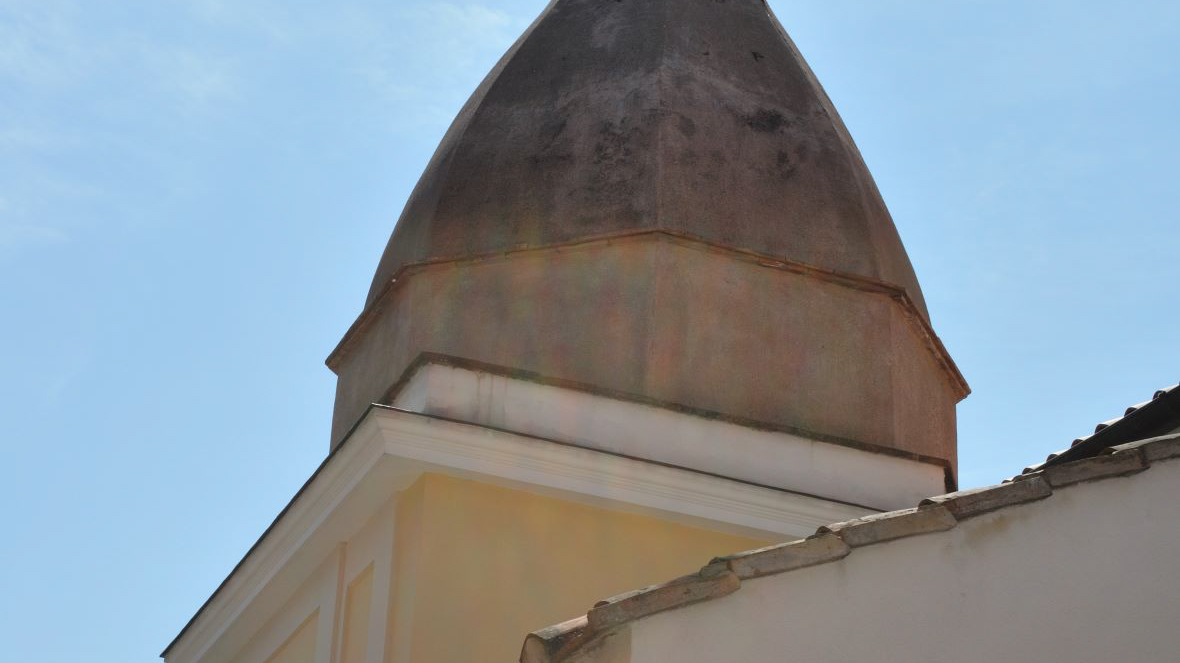
2021
Teano. Church of San Michele Arcangelo
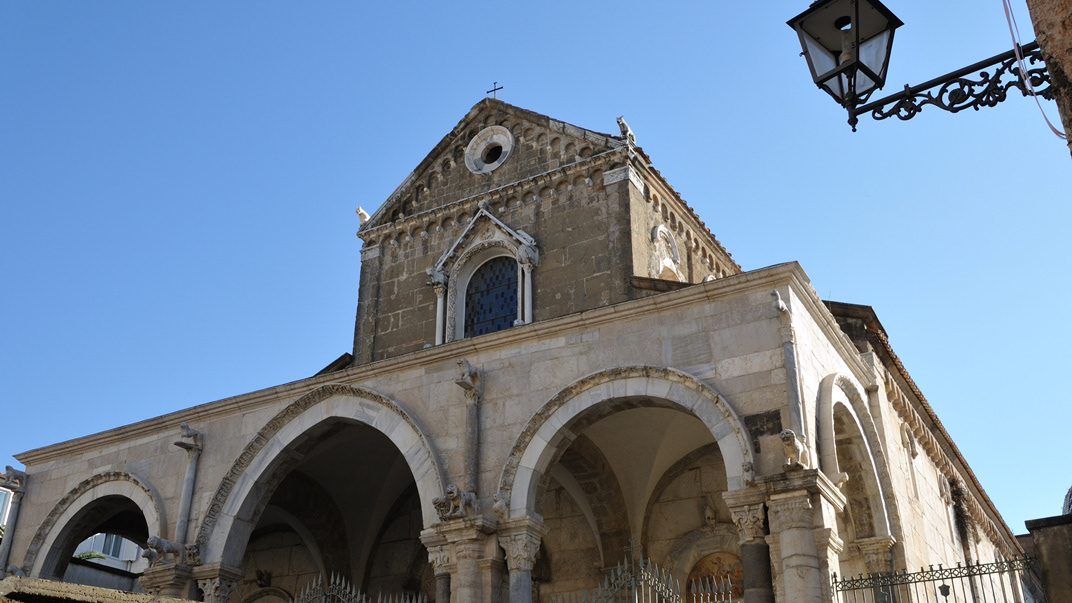
2008
Sessa Aurunca (CE), the Cathedral
Construction was begun by probable workers of the Casauriense school (see portico of the abbey of S. Clemente a Casauria built between 1176 and 1180) in 1113, partly reusing materials from ancient Roman buildings, and consecrated in 1183; the current external appearance was achieved in the first half of the thirteenth century with the addition of the portico and the large window placed in the upper part of the facade. The interior, on the other hand, having eliminated the trussed ceiling already in the thirteenth century, remained Romanesque until the mid-eighteenth century when the bishop Francesco Caracciolo d'Altamura decided to modernize it according to the tastes and style of the time, namely the Baroque. In July 1929, Pope Pius XI elevated it to the dignity of a minor basilica.

2021
Teano, frazione Casi, panorama
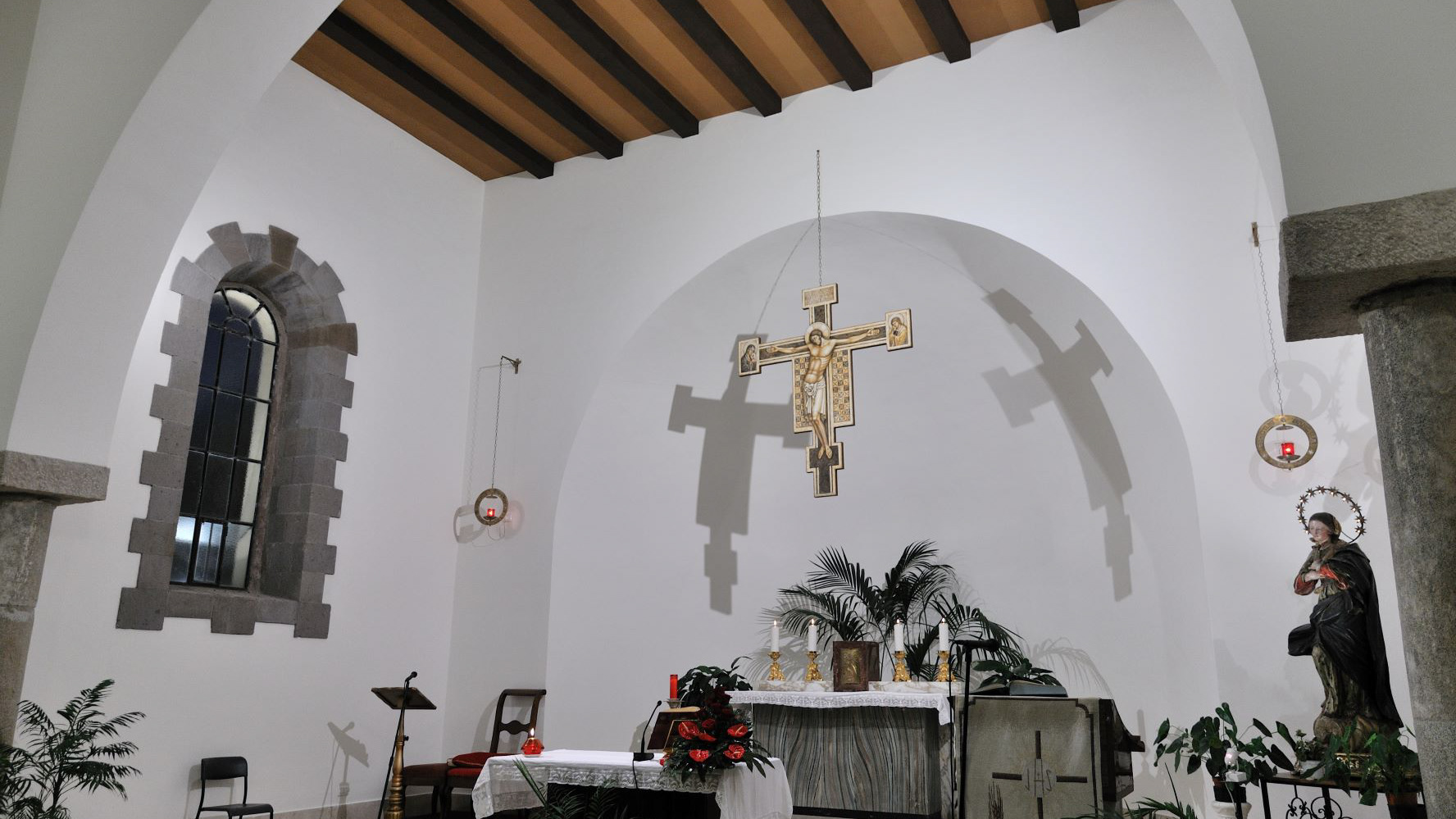
2021
Teano, the Cathedral. Left side chapel
The cathedral, originally dedicated to San Terenziano, was later named after San Clemente. Construction began in 1050 by Bishop Guglielmo, to replace the old cathedral of San Paride ad Fontem, located outside the city walls. The works were completed in 1116 by Bishop Pandulfo. The building has a basilica structure divided into three naves by two rows of columns. In 1608 it was damaged internally by a fire that almost completely destroyed the cosmates ambo, subsequently recomposed using the remains of the previous one integrated with the marble slabs of a fourteenth-century sepulchral monument already present in the church and positioned on twisted columns, two of which rested on fountain lions. During the 16th century the Romanesque apse was modified and on that occasion a precious carved wooden choir was built in the presbytery, built in 1539 by the Benedictine Antonio Maria Sertorio. The choir underwent two restorations, the first in the 17th century and the second in 1957, following the damage suffered during the Second World War.

2018
Campania Felix
Ancient Campania (often also identified as Campania Felix or even Ager Campanus) originally indicated the territory of the city of Capua Antica in the Roman period, and later also the plains of the various neighboring municipalities. It was a very vast territory when compared with the other Italic cities of the Roman and pre-Roman periods. It stretched from the slopes of Mount Massico (in the north) to the south of the Phlegrean Fields and the Vesuvian area. Initially it also included the ager Falernus, then it was greatly scaled down from Rome due to the alliance of the city of Capua with Annibale. Thanks to the fertility of the soil also due to the presence of the Volturno river, it deserved the name of Campania Felix.
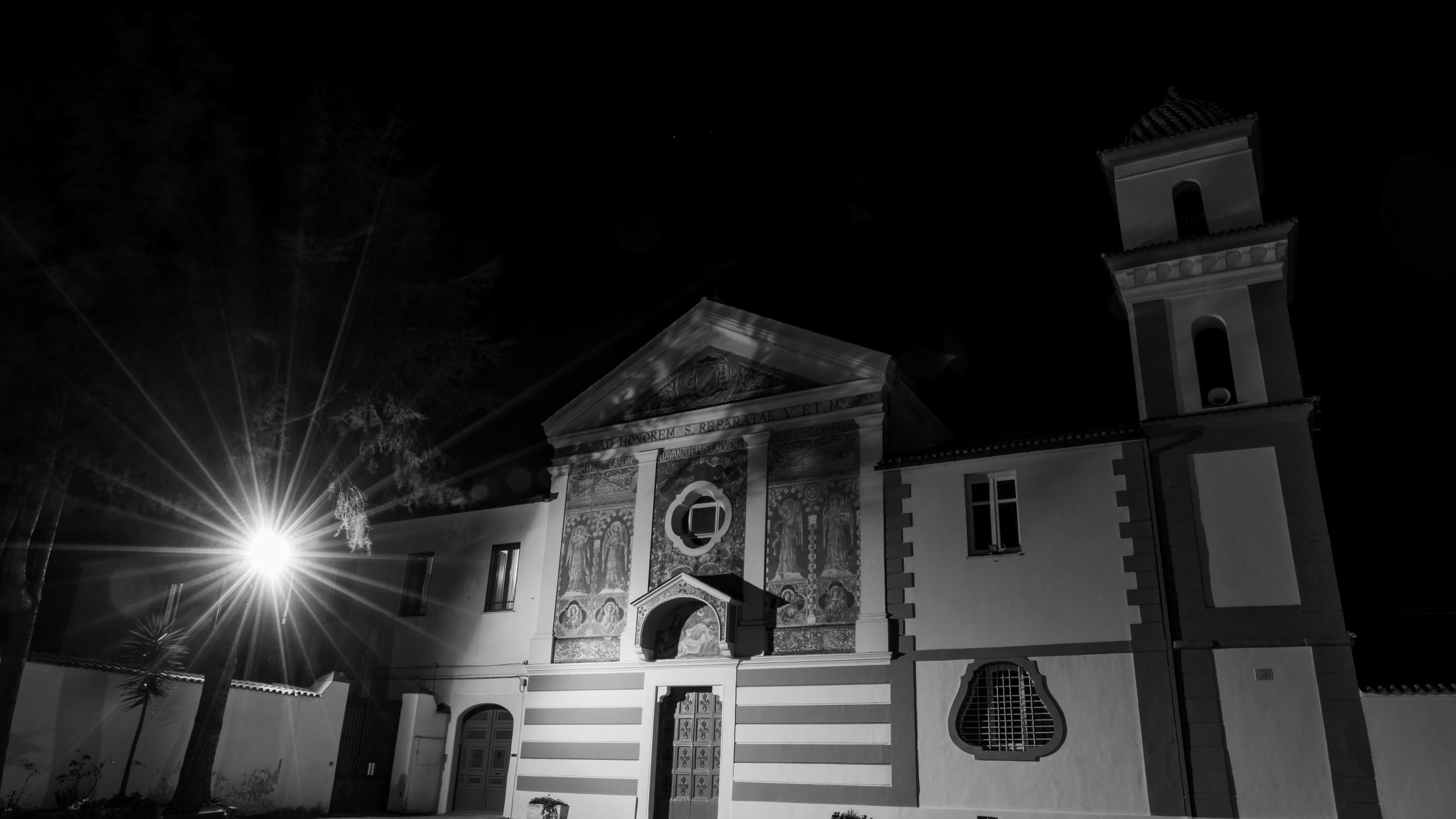
2020
Teano. The Monastery of S. Reparata
The Monastery of S. Reparata, probably founded in the 9th century, was canonically suppressed after the Council of Trent, due to the supervening prohibition of holding female monasteries outside the town. The nuns were welcomed in the Monastery of S. Caterina. The Monastery of S. Reparata is located along the road to Roccamonfina, in the Pino district and its foundation is not prior to 804 as it is not mentioned in the privilege of Charlemagne, which lists all the Benedictine possessions in Teano. The most probable date is the second half of the century. IX. According to the Bishop Mons. Domenico Giordano, the transfer of S. Reparata to the Cathedral took place in the year 880. It is one of the most important monasteries in Teano because the remains of Santa Reparata, who is the patron saint of Nice, are kept inside the church. his diocese, of the cities of Atri and Casoli; co-patroness of Florence, of Teano, of the diocese of Teramo-Atri and patroness and protector of the municipality of Pesco Sannita.
2022
Teano. Convent of Santa Reparata
It is one of the most important convents in Teano, also because inside the building there are the remains of the Saint who is the Coopatrona of Teano, as well as the patron saint of Florence.
